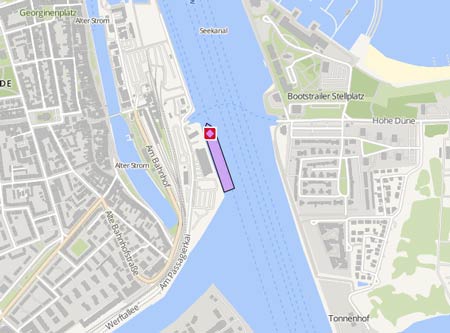STEN BERGEN
Latest ports
Latest Waypoints
Latest news
Coast Guard investigating possible environmental crime
White solidified lumps of cooking fat, animal fat and vegetable oil have washed ashore on several of the beaches of Hanko at the end of Jan 2,025, and probably came from the 'Sten Bergen', which was in Porvoo from Jan 24-26 and had washed its tanks at sea. The MARPOL Convention and its Annex II establish the international rules for the discharge of harmful liquid substances into the Baltic Sea and classify them into four different categories. The Coast Guard is investigating whether a crime may have been committed in connection with the discharge of the fat residues. The ship may have at least on paper remained within the framework of international law. It was believed to have pre-washed its tanks in the port of Sköldvik in Porvoo, after which it continued washing its tanks at sea. For the type of cargo the ship was transporting, under certain conditions, washing water can be discharged into the Baltic Sea, if it is a second rinse. Marine expert Vanessa Ryan from the World Wide Fund for Nature (WWF) believes that there is reason to investigate whether the laws regarding the discharge of washing water should be stricter, as it is difficult to know how big an environmental impact the discharge of wash water into the Baltic Sea has. Liquid substances transported in bulk by tanker are divided into four categories depending on how harmful they are considered to be to people and the environment. According to international regulations established by the MARPOL Convention, a ship carrying truly dangerous substances, i.e. X-cargo, must always pre-wash its tanks in port after unloading the cargo. For the following class, i.e. category Y, the restrictions are somewhat lighter. Pre-washing in ports also applies to Y-cargo, but not for all types of chemicals. The wash water must then be disposed of in the port. After this, the ships can continue washing after they have left port. After a pre-wash of the tanks of a ship that has transported a Y-cargo, international regulations allow a second rinse at sea, but under certain conditions. Among other things, the wash water must be sufficiently diluted,. A tank in a ship built in 2007 or later may contain a maximum of 75 liters of liquid substances after emptying when it is an X-, Y- or Z-cargo. The rules for how concentrated a substance can then be and how much wash water can be released into the sea differ for different substances. In order to release wash water, the ship in question must also be at least 12 nautical miles from the nearest shore, the water depth is at least 25 meters and the ship is moving at a speed of at least seven knots. The Coast Guard is currently investigating whether a crime could be behind the fat lumps in Hanko. If they conclude that a crime can be suspected, it could be a matter of something called an environmental protection offence in shipping. The city of Hanko is not currently planning to file a police report regarding the fat accumulations. Neste has taken responsibility for them and promised to cover the costs of the cleanup Reports with photos: https://yle.fi/a/74-20140453 https://yle.fi/a/7-10072004
Upload News

